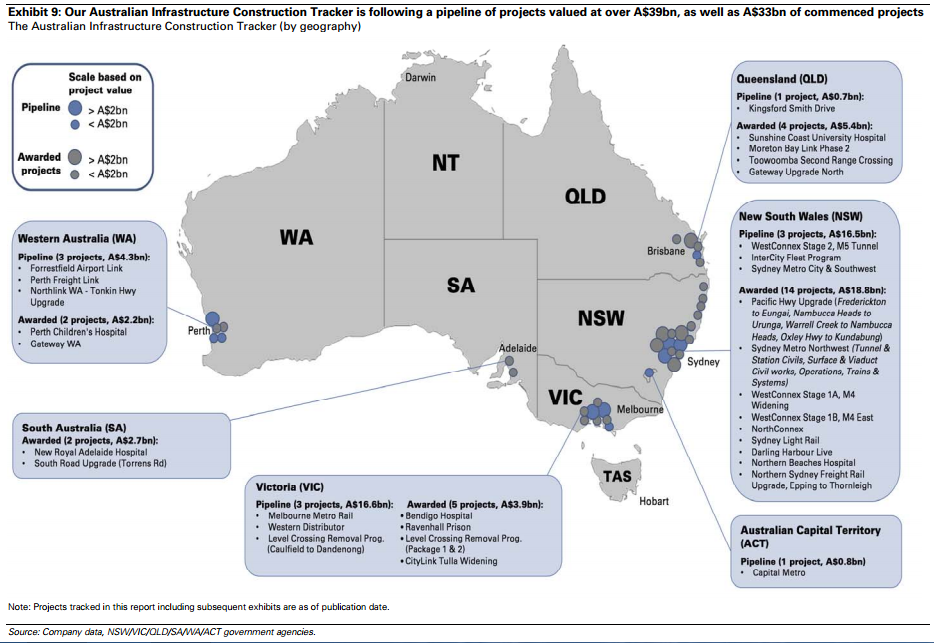From the Standard and Poors submission to Australia’s Senate Inquiry Into Infrastructure Financing And Government Expenditure:
Infrastructure is a high priority for global leaders focused on promoting global economic growth, as “one of the few remaining policy levers available to support growth, given already accommodative monetary policy”.
• Infrastructure investment offers the potential for a significant “multiplier effect” on economic growth when there is slack in the economy–an opportunity for Australia as new mining projects move into less labour-intensive production mode.
• There is broad consensus among all main political parties in Australia about the need to invest more in infrastructure, but at the same time a strong focus on fiscal consolidation amid weaker revenue at both the federal and state government levels.
• Public resources are under sustained downward pressure, particularly in light of long-term trends such as the aging of the population. These emerging fiscal constraints are creating challenges for Australia in funding high-quality infrastructure.
• Depoliticising the current infrastructure debate and reframing the conversation with the public to focus on the outcomes of high-quality infrastructure investment could reduce the potential for sub-optimal or compromised solutions.
• Given constraints, it is crucial that spending is managed reasonably, projects with the most advantageous returns are prioritised, risks are allocated to the parties best equipped to manage them, and infrastructure is delivered in the most cost-efficient manner.
• Because higher productivity is so central to economic growth, it must be an explicit rather than a presumed outcome when contemplating increased infrastructure spending.
• “Dynamic scoring’ of infrastructure proposals, taking into account both direct short-term cost and long-term fiscal return, is important in a fiscally constrained environment.
• In Australia, where most infrastructure is delivered and funded through the states, the Commonwealth has an important role in incentivising investment in projects that (are in the national interest and) optimise national outcomes.
• Specifically targeting ‘AAA’ credit ratings in the short term–particularly at the state level–may not optimise social and economic outcomes in the medium-to-long term if the trade-off is investment in high “multiplier effect”, high-quality infrastructure.
• Private sector inflows could fill the gap left by fiscally constrained governments. However, public policy decisions and investment incentives will play a big part in determining whether private sector institutions get more heavily involved.
• More strategic vision and policy certainty are needed to promote investment in innovation and emerging sectors–such as the renewable energy sector–to position Australia for future challenges and success.
• Any discussion on future infrastructure planning should take into account our growing social infrastructure needs. Lifting more people out of poverty and entrenched disadvantage would likely be good for the economy. Too much inequality can be a drag on long-run economic growth.
• Encouraging the development of the nascent social impact investment sector may increase efficiency, effectiveness, and innovation to solve entrenched social issues, and attract a broader spectrum of investors over time to scale up proven ideas.
That’s good advice from the man carrying the whip. Here’s the map of what’s coming via Goldies:

I can’t tell you if all of those roads are productivity enhancing and in what degree, which rather runs against S&P’s core advice:
Depoliticising the current infrastructure debate and reframing the conversation with the public to focus on the outcomes of high-quality infrastructure investment could reduce the potential for sub-optimal or compromised solutions.

